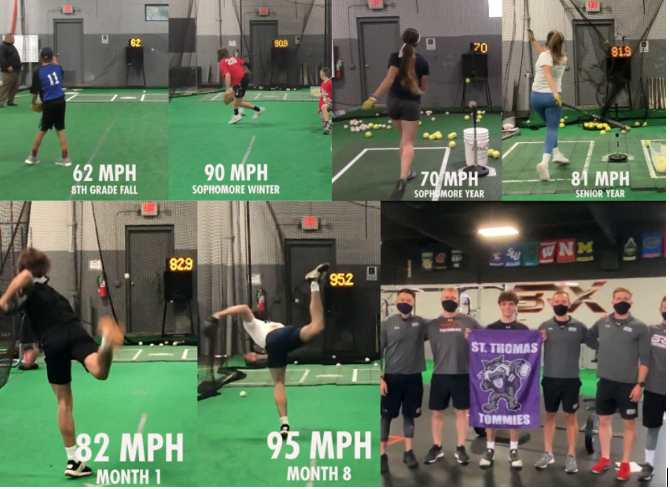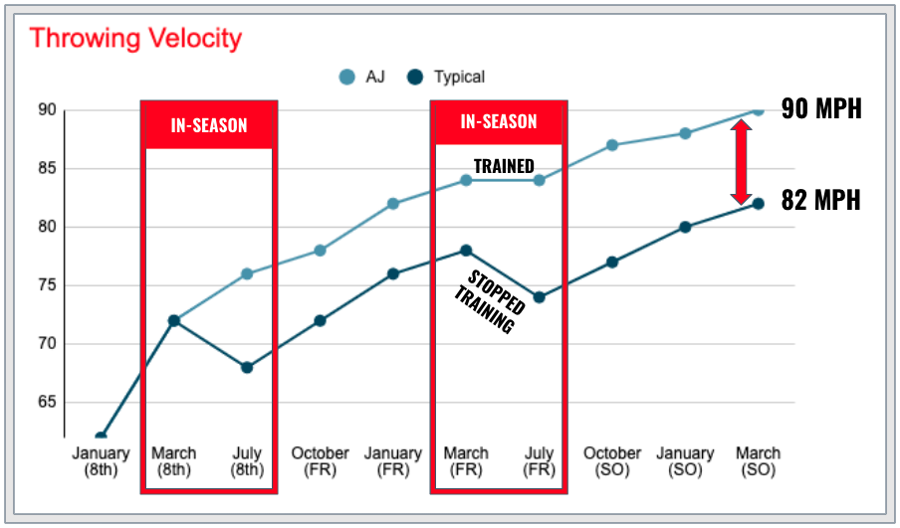The Ultimate Baseball Recruiting Guide For High School Juniors
February 18, 2021
BRX RECRUITING | | JUNIOR YEAR GUIDE Important note: this checklist is assuming you have reviewed....png)
During the in-season period, we are frequently asked the question, “How should we train during the season?”
The short answer is this: if you aren’t training in-season, you’re making a colossal mistake.
However, the longer answer to the question above, is that it depends.
For most of our athletes, training 1-3x/wk is a realistic and suitable training frequency in-season so that we can maintain all the improvements you’ve made in the months prior.
However, we also expect that there will be heavier physical demands put on your body while you’re in the midst of baseball season, so expect for these types of workouts to be lighter in intensity. Your approach for in-season training should be to leave every workout feeling better than when you started it.
If the answers we provided above about in-season training do not satisfy you, keep reading, because what we are about to explain here might be the most important part of this blog today.
There are some important considerations to make when it comes to your in-season training, that we haven’t touched on. I’m willing to bet that for most if not all of you, simply “maintaining” your performance and fitness during the season will not be enough.
A lot of our athletes have made incredible progress training with us. What’s not well-known is the biggest X-factor that allowed that to happen.

Each of them trained at least 2x/week at BRX in-season to avoid losing the progress they made during the off-season. It certainly wasn't easy. All of them made 30+ minute drives to BRX after practice or on weekends, multiple days per week - even on days they didn't feel like it.
Let's zoom out and think about development through a long-term lens. When compared to an athlete who hits the "pause button" for 3-6 months each year, you can see how just maintaining your performance abilities in-season can have a monumental impact on long-term ability level.
Try thinking about that over the course of a high school career (4 years of development). An athlete who chooses NOT to train in-season over the course of that career loses 1-2 full years of development.
How much progress can you make in a year? Two years? It shouldn’t be hard to see that this is a HUGE opportunity for further development of your baseball performance that way too many people are not taking advantage of.
In fact here is one of our athlete’s progress during his 28-month journey with BRX so far, compared to what we typically see:

It's not rocket science. Year-round consistency trumps an on-again, off-again approach - in just about every walk of life.
Again, we know that given our line of work, this might come across as biased. But it's something we're incredibly passionate about. Whether it's to make their 8th grade team, get playing time on varsity, or eventually play in college, we want nothing more than for each of our athletes to reach their respective goals. Training in-season is a critical part of making those goals a reality.
Maintaining is nice—and we believe that it’s something every athlete is capable of—but what about improving during baseball season?
Beyond what we’ve mentioned here, there are also some other important questions to consider that will determine the path we take, such as:
If you’re already committed or focused on performance during your high school season, it’s not crucial that we strive to make “gains” during the high school season. You’ll want to train once or twice per week to maintain your offseason strength. If you’re serious and the demands of your season/travel are not getting in the way, go for three times.
On the other hand, are you someone who is not currently committed, not receiving the level of recruiting attention you’re satisfied with, and/or needs to perform at high level at a showcase or tournament in late summer or early fall? If so, your spring baseball season or spring league, for all intents and purposes, is still the offseason!
Preventing soreness for a casual spring league baseball game pales in comparison to putting yourself in the best possible shape for events where college coaches and scouts will be watching you a couple months down the road. If you’re still 3+ months out from these important events, you should be training 4 times per week using a “standard” strength programs as opposed to an “in-season” programs. If you truly want to reach your goals, training when others have packed it in for the summer might be what separates you from the thousands of others fighting for the same spots as you.
There is a reason 57% of baseball athletes encounter some sort of arm injury during the course of a season – strength training goes by the wayside, competition is increased, and the body starts to break down. Think of arm health as a bank account. Throwing is a “withdrawal,” while strength training is a “deposit.” Injuries and poor performance happen when the “withdrawals” vastly outnumber the “deposits.” In more technical terms, rotator cuff strength deteriorates throughout the course of a season due to increased throwing volume, you lose dynamic stability of your shoulder and elbow, and injury risk skyrockets while performance suffers.
Getting in even once a week will help reduce end-of-season fatigue, keep your body moving properly, and most importantly, keep you healthy! Training in-season is the key to avoiding regression off the field and continuing to make progressions on the field. For pitchers, and especially starters, it is especially important that you work out immediately after or the day after throwing to expedite the recovery process via mobility and arm care exercises.
It’s very important to mention that some of the best results we’ve seen to date (82 to 89mph in two months, 83 to 88mph in three months, etc) have occurred in athletes who trained during their season when their body was in baseball shape. Of course, we’re not recommending that anyone deadlift 400 pounds the day before they pitch or play – you should adjust the training protocol in-season to allow yourself to perform at an optimal level.
Are you struggling to increase your throwing velocity, exit velocity, or running speed? Don't worry; you're not alone. That's why we have developed BDS, Baseball Development Secrets. The Baseball Development Secrets System (BDS) is a baseball-specific strength training program specifically designed to increase throwing velocity, exit velocity, and running speed. The best part is you can get access to our program for 7 days free of charge! If you're serious about your baseball development, Baseball Developments Secrets could be that answer for you as it has been for hundreds of other baseball players. Start your FREE trial today!
February 18, 2021
BRX RECRUITING | | JUNIOR YEAR GUIDE Important note: this checklist is assuming you have reviewed...February 18, 2021
BRX RECRUITING | SOPHOMORE YEAR GUIDE Important note: this checklist is assuming you have reviewed...February 18, 2021
Mobility and Warm Up If you’re skeptical as to whether or not the proper warm up can have an impact...